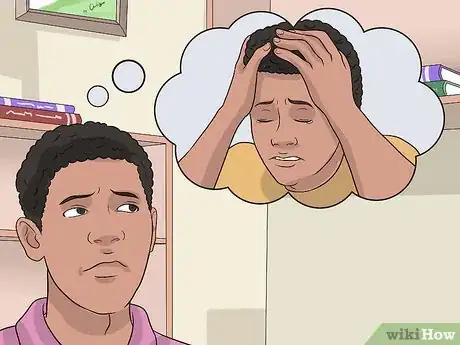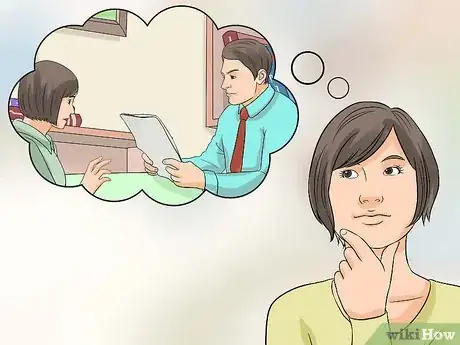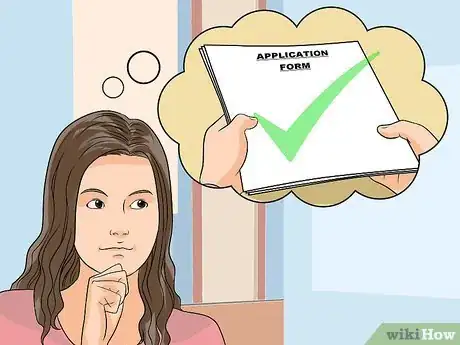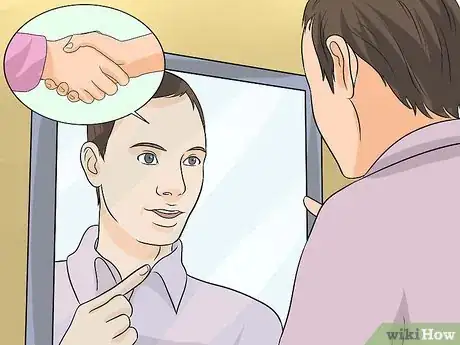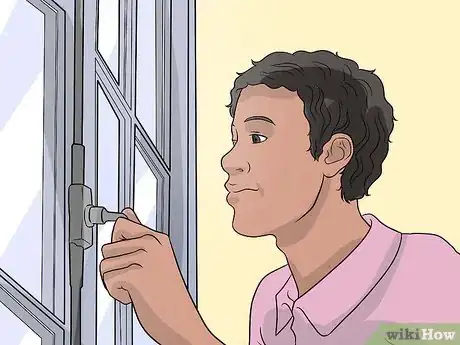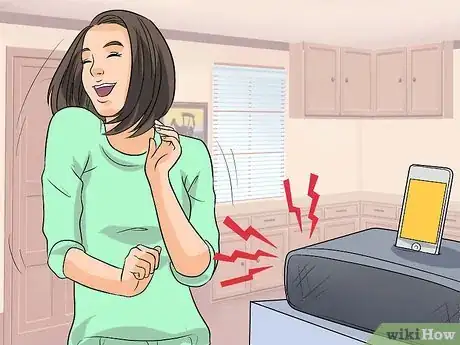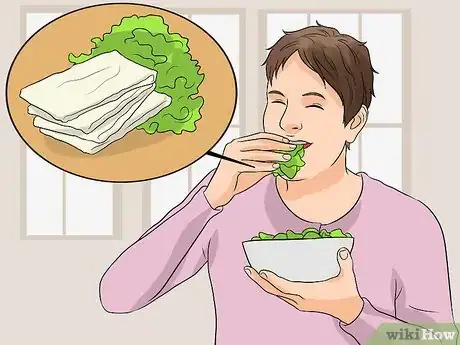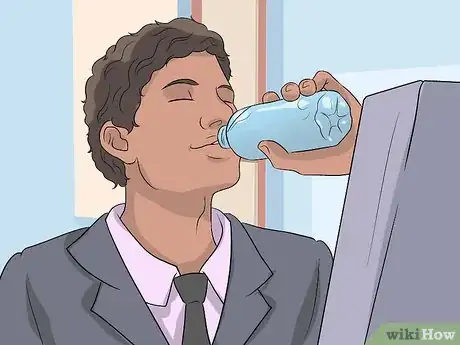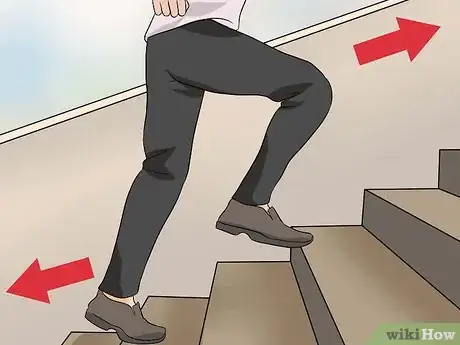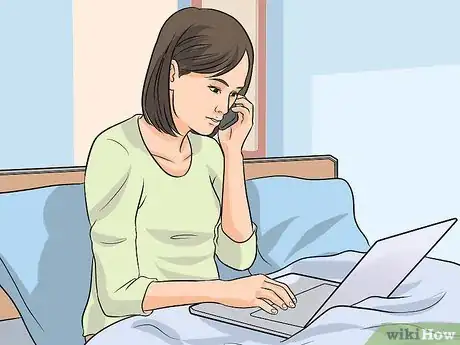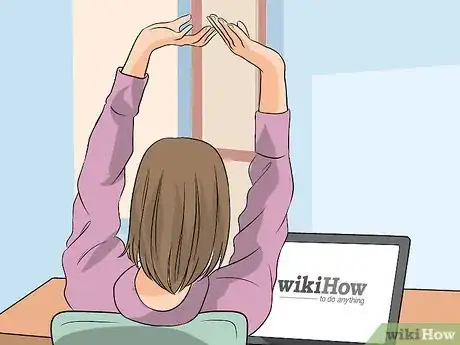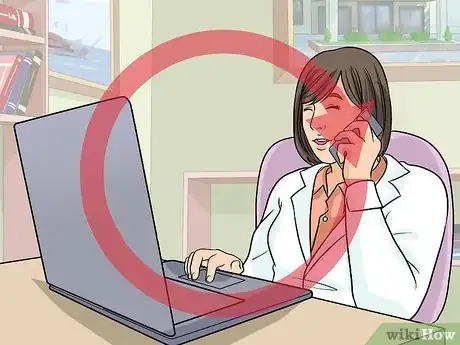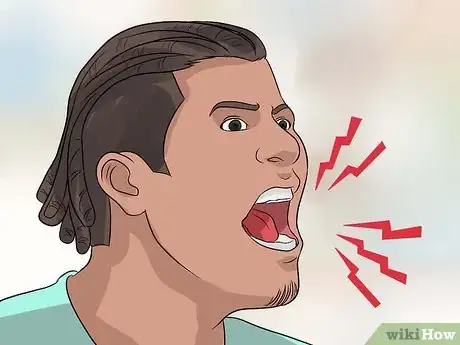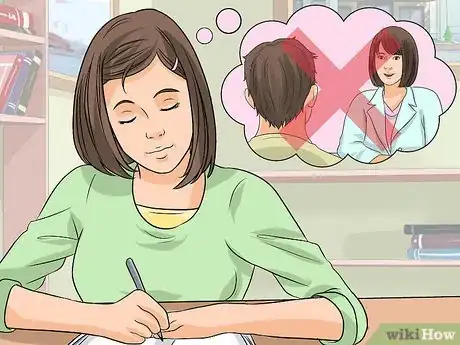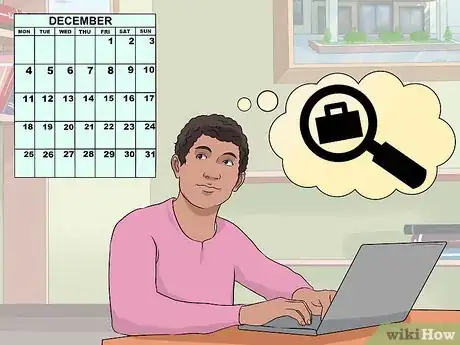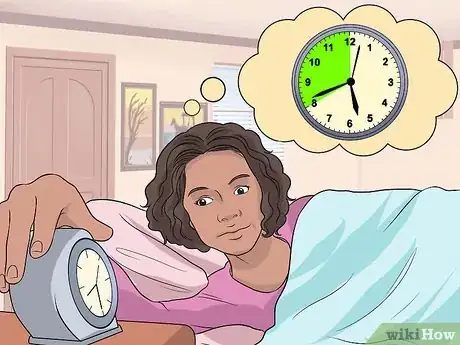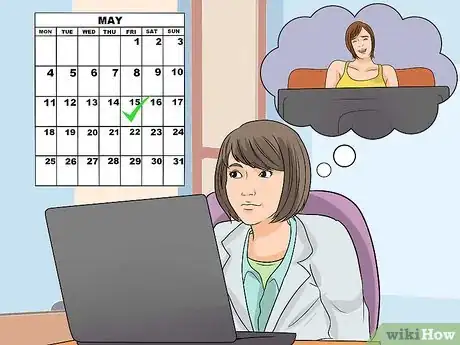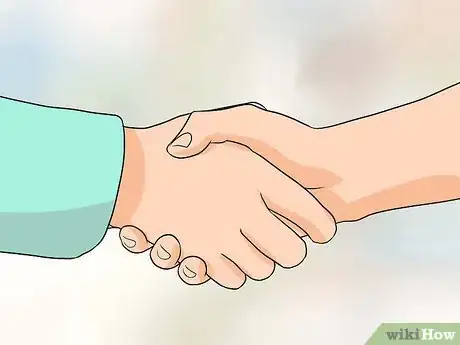This article was co-authored by Donna Novak, Psy.D. Dr. Donna Novak is a Licensed Clinical Psychologist based in Simi Valley, California. With over ten years of experience, Dr. Novak specializes in treating anxiety and relationship and sex concerns. She holds a BA in Psychology from the University of California, Los Angeles (UCLA) and a doctoral degree (Psy.D) in Clinical Psychology from Alliant International University-Los Angeles. Dr. Novak uses a differentiation model in treatment that focuses on personal growth by increasing self-awareness, personal motivation, and confidence.
There are 22 references cited in this article, which can be found at the bottom of the page.
This article has been viewed 201,989 times.
Slumps come in many forms, from a random bad mood to the afternoon slump you face down each day. Maybe you're a creative type, and you find yourself stuck on a project. Any of these slumps can be remedied with the right attitude, though it may take some time and effort.
Steps
Getting Out of a Bad Mood
-
1Identify your mindset. Your mindset or attitude is an important part of your mood. That is, you can't always change a situation you're in, but you can change how you react to it. You have to start by identifying what you're feeling currently.[1]
- For instance, maybe you had a bad interview for a job. You can identify your feelings as sad or angry, depending on what you're feeling.[2]
- If you're stressing over a lot of different things, take some time to jot down what's on your mind. In this list, identify both what you have control over and what you don't have control over.[3]
-
2Decide what mood would be better. Once you've established what mood you're already in, think about what mood would be better. To help you decide, focus on what kind of mood would help you move forward, rather than stay stuck where you are.[4]
- For instance, if you did badly on an interview, you may decide that a better mood would be confidence that you will do better next time by learning from your mistakes.
- While you can't instantly change to a new mood, deciding what mood would be better can help push you in the right direction.
Advertisement -
3Look for the positive. When you're in a bad mood, you're likely only looking at what went wrong. However, if you can find the positive in the situation, you'll help change your mood.
- This step can be as simple as looking for the things in your life that you're grateful for or looking for what you can be grateful for, even in a situation that you think isn't great. For instance, if you've had a bad job interview, at least you have the qualifications and the resources to apply for those jobs.
- If you tend to complain a lot, come up with alternative, more positive things you can say to yourself in the moment.[5]
-
4Give yourself a pep talk. Basically, just tell yourself that you can and will do better. It's like a friend giving you a pep talk, but you're doing it for yourself.[6]
- For instance, in the case of the interview, you could say, "That didn't go as well as you hoped, but you'll do so much better next time. Plus, at least you didn't bomb it completely. You showed up on time, and you were dressed in a professional manner. Plus, you rocked that question about your future goals!"[7]
-
5Get into the sunlight. Sunlight can naturally improve your mood, especially over time. If you work in a dark environment or stay in the house all day, try spending some time outside.[8]
- If you can't get outside, try opening the windows to let the light in. If you live in an area that is darker in the winter, you might try getting a lamp meant to offer the same benefits as sunlight.
-
6Go for a walk. Exercise is a natural mood-lifter. When you exercise, your body releases mood-lifting endorphins into your bloodstream.[9]
-
7Enjoy time with other people. Getting out and spending time with people you like can also boost your mood. If you don't have many friends, try joining a club that focuses on a hobby you love.[12]
- Try connecting with people on the internet through social media, who you can then meet up with in real life. You can also meet people at social events such as open mic nights at your local coffee shop.
-
8Get in a better environment. If you're sitting alone in your house brooding, it may be time to get out. Go to the park. Enjoy a coffee at a coffee shop. Stop by the library or bookstore. Pick a place that makes you feel better, and spend an hour or two lifting your mood.[13]
-
9Play some happy music. Pick some music that always energizes you. Put it in a playlist, and blast it across your room or house. Spending some time listening to music that makes you happy can lift your mood.[14]
- If you can't decide what to listen to, many social music sites have playlists made by users for certain moods. For instance, you could find a list meant to be energizing or make you happier.
-
10Find out about things that interest you. When you are in a bad mood, try engaging in something that interests you. Learning something new, which engages your creativity and interest, can help boost your mood.[15]
- One place to explore ideas is your local libraries. Try checking out books on some topics you love.
Making It Through an Afternoon Slump
-
1Take your lunch break. Food, of course, will help sustain you through the afternoon. However, taking a break from work is also important. It will help rejuvenate your brain, letting you glide through the afternoon.
-
2Eat a snack. Snacks can give you a boost of energy to get through the afternoon. Try picking a snack that's high in complex carbohydrates, such as whole grains or fruits. Adding some protein can also help you sustain that energy.[16]
- For instance, pair some whole-grain crackers and veggies with hummus or eat an apple with some peanut butter.[17]
-
3Skip sugar. Simple sugars such as sodas and juices can boost your energy. However, you may find yourself just as tired in a short amount of time, as insulin works to bring down the sugar levels in your blood. Simple sugars don't give you the sustained energy you need.[18]
-
4Try a cat nap. If possible, try taking a short nap. For instance, if you can take a late lunch, go down to your car to shut your eyes for 20 to 30 minutes. It can help you feel less drowsy through the rest of the afternoon. Even a 5 minute nap at your desk can help, if you can get away with it.
-
5Enjoy some caffeine. The best time to drink some caffeine is actually right before you take a nap. Caffeine takes about 30 minutes to kick in, so when you are waking up, the caffeine will kick in. Even if you don't have time for a nap, caffeine can help give you an energy boost in the afternoon.[19]
-
6Ensure you're hydrated. If you become dehydrated, your whole body slows down. Make sure you are getting enough fluids throughout the day by keeping water on your desk to sip on all day long.[20]
-
7Get some exercise. While most of the time, you can't stop for an hour-long exercise break, even short bursts of exercise can boost your energy. Try taking a lap around the office or running up and down the stairs for a minute. If you can take a walk outside, even better, as sunlight can increase alertness.[21]
Getting Through a Creative Slump
-
1Get your juices flowing early. Try working on your project or idea when you first wake up. Often, when you're brain is still sleepy, you have similar brain patterns to when you're dreaming, and it can help get your creativity going.[22]
-
2Work on a different part. When you're stuck on a project, you're often stuck on one section. Maybe you can't get past the beginning or one particularly difficult part. If you've been hitting your against the problem for a while now, try working on a different section. It may give you a chance to come up with a solution for the part you're having trouble with.[23]
-
3Give your brain some time to solve it. Sometimes, when you've been working on a problem for hours, it's time to a take a break. If you can go do something else for a while, it gives your brain a chance to work through the problem without actively beating against it.[24]
- Try exercise for your break. It gets your body moving and gives your brain something to do, but it also doesn't overtax it, allowing it to still work on the problem in the background.
-
4Find things that inspire you. You can't always just sit inside when you're trying to create. You have to refill yourself with things that make you curious or that interest you. When you spend time away from your project, make sure to observe what's going on around you.[25]
-
5Use a creative exercise. Freewriting or free-drawing can help you get over your creative slump. Basically, you just take out a piece of paper and start writing whatever comes into your head. For free drawing, just start doodling. While these techniques work best for writers and artists, they do have some crossover power, meaning anyone can use them to get your creative juices flowing.[26]
- One way to jump start your creativity is to try a different kind of creative activity. For instance, you're a writer, try doing some painting to help get you out of your slump.
-
6Keep going. You can't finish a project if you don't keep working on it. Sometimes, persistence is more important than raw talent. Keep working at it until you finish what you want to do.[27]
-
7Talk out loud. Sometimes talking through a problem, even to yourself, can help you get past your creative slump. It can help if you record what you're saying, so you'll have notes for later.[28]
Jump-Starting Your Life
-
1Set goals. When you find yourself stalling in your life, it's time to start figuring out where you want to be. Take some time to think and write about how you want your life to change. Maybe you're unsatisfied with your job or with your health. Once you figure out where you want to be, you need to set goals to get there.[29]
-
2Make small, defined goals. For goals to work, you need to be able to meet them regularly. That means that your goals need to be measurable and in small chunks.[30]
- For instance, if you want to change your career, don't just state "I want a new job." Instead, break that down into small, measurable junks, such as, "I will search job sites every night this week for 30 minutes, and I will apply to at least 3 jobs this week."
- Make sure to include a time element, as otherwise, the goal is too vague, such as "I will have a new job by the end of next month." However, be realistic. You can't change your whole life overnight.
-
3Change your lifestyle. Some goals can't just be met without changing your life around a bit. You don't necessarily need to make drastic changes, but if your goal is to say, get a new job, you'll need to find time to look. If you can't realistically do it in the evening, try stealing 20 minutes in the morning by getting up before everyone else.[31]
-
4Meet your deadlines. Now, you need to start acting on your goals. Take the time you need each day to move forward.[32] In addition, try building in some rewards for when you do follow through. For instance, maybe you'll take yourself to the movies if you follow through with your goals for a week.[33]
-
5Get out, and meet people. Meeting people helps inspire you to new ideas and new possibilities. In addition, building a network of people is useful for when you want to change jobs or start a new project, as you'll have people to rely on. Plus, new people can help you consider new interests, as you learn about their lives.[34]
- Try meeting up with people who are already in your contact list for coffee or drinks. However, also take time to meet new people. Try taking a class at your community college or with your parks and rec department. Alternatively, try networking events or meetups you find on social networks.
- If you're anxious about meeting new people, try some deep breathing exercises. For example, breathe in really slowly as you count to 5, and then breathe out.[35]
Warnings
- Sometimes a slump is more than a slump. If you've been feeling down for a while, it's probably time to talk to your doctor about depression.⧼thumbs_response⧽
References
- ↑ http://kidshealth.org/teen/your_mind/best_self/choose-mood.html#
- ↑ http://kidshealth.org/teen/your_mind/best_self/choose-mood.html#
- ↑ Donna Novak, Psy.D. Licensed Clinical Psychologist. Expert Interview. 8 December 2020.
- ↑ http://kidshealth.org/teen/your_mind/best_self/choose-mood.html#
- ↑ Donna Novak, Psy.D. Licensed Clinical Psychologist. Expert Interview. 8 December 2020.
- ↑ http://kidshealth.org/teen/your_mind/best_self/choose-mood.html#
- ↑ http://kidshealth.org/teen/your_mind/best_self/choose-mood.html#
- ↑ https://www.bcm.edu/news/psychiatry-and-behavior/improve-your-mood
- ↑ http://psychcentral.com/blog/archives/2012/10/24/exercise-natures-mood-enhancer/
- ↑ https://www.bcm.edu/news/psychiatry-and-behavior/improve-your-mood
- ↑ Donna Novak, Psy.D. Licensed Clinical Psychologist. Expert Interview. 8 December 2020.
- ↑ https://www.bcm.edu/news/psychiatry-and-behavior/improve-your-mood
- ↑ http://kidshealth.org/teen/your_mind/best_self/choose-mood.html#
- ↑ http://kidshealth.org/teen/your_mind/best_self/choose-mood.html#
- ↑ http://momentumblog.bcm.edu/2015/06/08/breaking-bad-moods-with-these-tips/
- ↑ https://www.urmc.rochester.edu/encyclopedia/content.aspx?ContentTypeID=1&ContentID=503
- ↑ https://www.urmc.rochester.edu/encyclopedia/content.aspx?ContentTypeID=1&ContentID=503
- ↑ https://www.urmc.rochester.edu/encyclopedia/content.aspx?ContentTypeID=1&ContentID=503
- ↑ http://www.health.harvard.edu/newsletter_article/napping-may-not-be-such-a-no-no
- ↑ https://www.urmc.rochester.edu/encyclopedia/content.aspx?ContentTypeID=1&ContentID=503
- ↑ https://www.urmc.rochester.edu/encyclopedia/content.aspx?ContentTypeID=1&ContentID=503
- ↑ http://www.writersdigest.com/editor-blogs/guide-to-literary-agents/7-ways-to-overcome-writers-block
- ↑ https://owl.english.purdue.edu/owl/resource/567/02/
- ↑ https://www.psychologytoday.com/blog/brain-wise/201307/creativity-slump-5-tips-rev-your-brain
- ↑ https://txwes.edu/news-and-events/all-news/top-five-list/author-julie-murphy-shares-her-top-tips-for-writers/#.VnDqs7_55j8
- ↑ http://www.writersdigest.com/editor-blogs/guide-to-literary-agents/7-ways-to-overcome-writers-block
- ↑ https://txwes.edu/news-and-events/all-news/top-five-list/author-julie-murphy-shares-her-top-tips-for-writers/#.VnDqs7_55j8
- ↑ https://owl.english.purdue.edu/owl/resource/567/02/
- ↑ http://blogs.wsj.com/atwork/2015/01/15/restarting-a-stalled-career/
- ↑ https://www.independence.edu/blog/setting-realistic-goals
- ↑ http://www.health.harvard.edu/healthbeat/7-ways-to-jumpstart-healthy-change-in-your-life
- ↑ https://www.psychologytoday.com/blog/now-is-everything/201009/actions-speak-louder-words-8-ways-move-forward-today
- ↑ https://www.psychologytoday.com/blog/happiness-purpose/201508/take-action-now
- ↑ http://money.usnews.com/money/careers/articles/2008/03/13/ways-to-reboot-your-career-at-midlife
- ↑ Donna Novak, Psy.D. Licensed Clinical Psychologist. Expert Interview. 8 December 2020.
